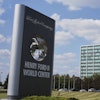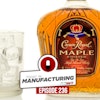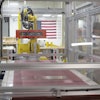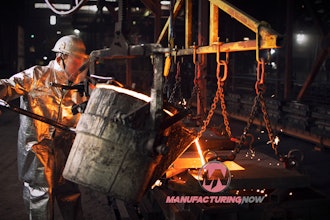RFID is beatable: tags can be punctured, crushed or even microwaved

"RFID is, at best, a mediocre security solution." -Karen Langhauser |
While millions of Americans feel they answer to a higher power, if you are a manufacturer looking to supply mega-retailers, you answer to Wal-Mart. Wal-Mart is arguably one of the few businesses in this country powerful enough to launch revolutions – and RFID is a prime example.
By mandating that its suppliers implement RFID tags on cases and pallets, Wal-Mart made RFID an industry buzzword.
But is RFID worthy of this super-stardom? Switching to RFID is a major investment – especially for small manufacturers – and major investments become bad investments if they don’t pay off.
The first downfall is price. Despite the fact that prices are dropping, Silicon RFID chips still cost too much for many industries.
The food industry is a good example of this, where many products have low profit margins and high turnover rates. To use RFID tags for item-level tagging, they would conceivably have to cost less than 1 cent for antenna and microchip combined.
Secondly, RFID technology requires employee compliance and training. There are procedures that need to be followed. Employees really need to understand the purpose of these tags and how radio frequency information can be used to effectively to better the business. Training takes time – as well as everybody’s favorite – money.
Thirdly, not everything is RFID-friendly. Metal – a huge industrial player – does not play well with RFID. Tags applied directly to metal objects will not read. Thus, in order to tag metal products, a barrier of foam or plastic would have to be placed in between the tag and product (the same applies for liquid products which cause similar problems for RFID). The metal in plant construction – such as steel racking – also impacts the accuracy and reliable of RFID tags.
Finally, RFID is beatable. Tags can deliberately or accidentally be punctured, crushed or even microwaved (cool, but not recommended). If RFID is used to combat theft, it is possible to locate and remove the labels. It is, at best, a mediocre security solution.
This is not to say that there are benefits to RFID – and we have all heard plenty about them. The choice becomes an individualized one, where each plant needs to weight its options and decide what’s best for business. Unless of course, you want to supply to Wal-mart…then the choice has already been made for you.
Comments? Email Food Manufacturing Editor-in-Chief, Karen Langhauser: [email protected].
More on manufacturing:
RFID: Keep On Tracking!
Cloning Data Needs A New Flavor
A Different Take On Tracking
Toy Makers Struggle To Offset Rising Costs


















